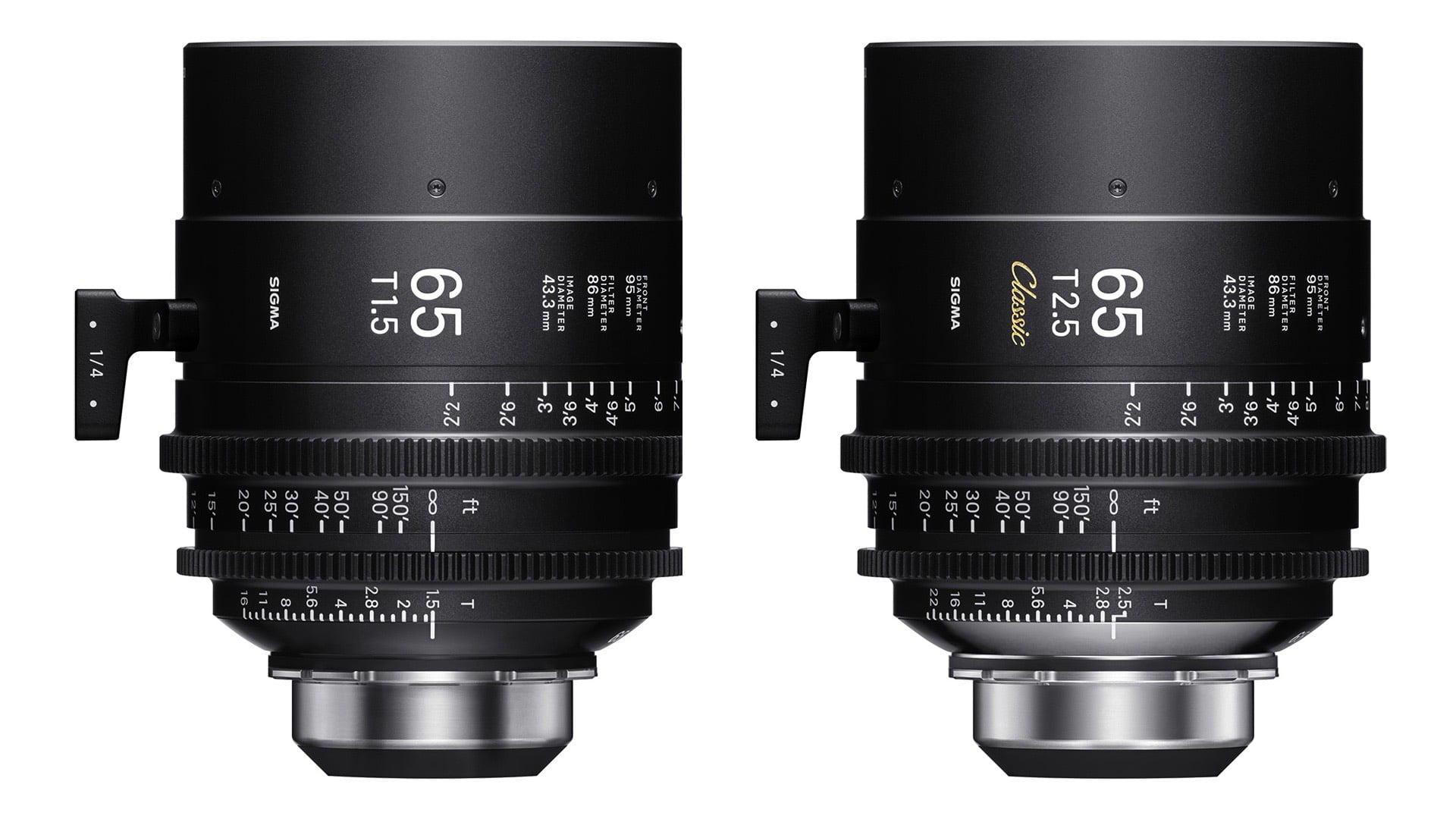
Sigma plugs the 50 to 85mm hole in its two Cine FF ranges with new glass.
The success of Sigma’s Cine FF range was based on a few different things, not least of them timing. Having clearly perceived the opportunity to sell some full-frame glass to an industry which had just begun to use full-frame cameras, the company then went on to do a very respectable job of building some solid, usable and attractive lenses based on its existing stills designs. Eventually the range grew to include ten Cine FF lenses from 14 to 135mm, mostly at T1.5, and another ten in the uncoated (or at least less-coated) Classic series.
Sigma has now added an eleventh lens to both ranges with a 65mm option, filling that conspicuously large gap between 50 and 85. The way in which focal lengths increase nonlinearly to create a natural-seeming series of changes in field of view is one of those things, like the series of f-stops, that doesn’t instinctively make a lot of sense. In reality the 35mm increase between 50 and 85 actually looks more or less like the same sort of change in field of view as the 50mm increase between 85 and 135, so it’s not as if the range was specifically missing anything before, but 65mm is probably a sensible place to start dividing things more finely.
The area around 50mm is a fairly popular one, so nobody’s going to complain about a bit more flexibility. That’s especially the case on full-frame cameras where 50 becomes rather wide, falling into the sort of situation where we might have used the 35 previously. In such a situation, assuming a 1.5:1 equivalence, the 65 still ends up being a little wider than the 50 would have been, and the 85 very fractionally narrower. Situations like this can become very complicated where lenses have a long minimum object distance, though that’s stereotypically a concern of anamorphics, not Sigma’s range; the new lens focuses down to 2’2”.
Like the rest of the range, the new 65 is a T1.5 lens, or T2.5 in the Classic incarnation, which tells us something about the value of coatings. All are available in PL, EF, or E mounts, with optional /i communications and projecting a 43.3mm image circle. They suit people using anything from a Venice down to Sigma’s own, diminutive FP. The company isn’t talking money, but both the 50 and 85mm options go for £3300 without the /i option or glow-in-the-dark paint, putting them a little spendier than CP.2s, and benefiting from more consistent layout. It isn’t talking delivery dates either, though the new lens will debut at IBC in Amsterdam.
Tags: Production


Comments